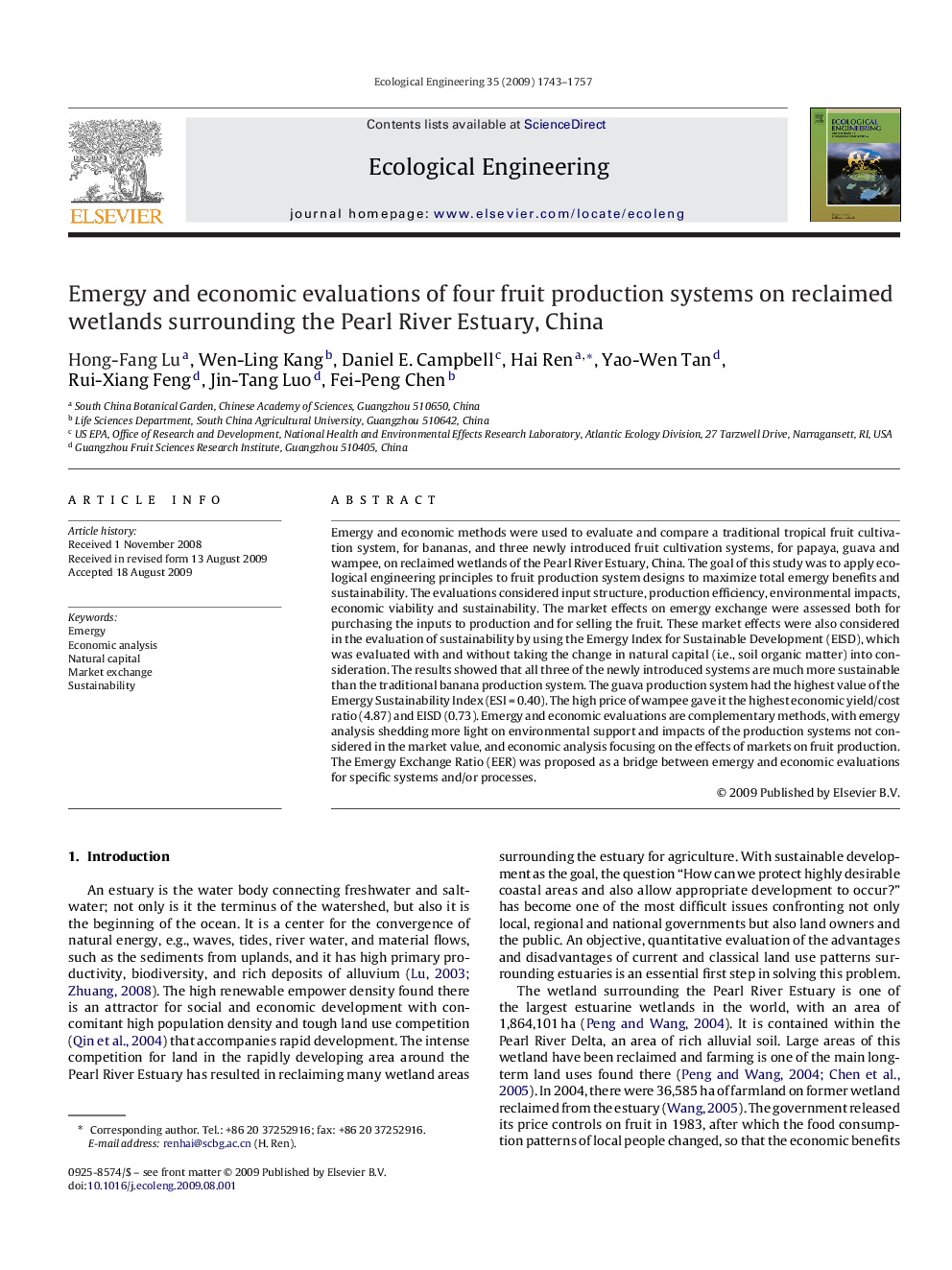| Article ID | Journal | Published Year | Pages | File Type |
|---|---|---|---|---|
| 4390415 | Ecological Engineering | 2009 | 15 Pages |
Emergy and economic methods were used to evaluate and compare a traditional tropical fruit cultivation system, for bananas, and three newly introduced fruit cultivation systems, for papaya, guava and wampee, on reclaimed wetlands of the Pearl River Estuary, China. The goal of this study was to apply ecological engineering principles to fruit production system designs to maximize total emergy benefits and sustainability. The evaluations considered input structure, production efficiency, environmental impacts, economic viability and sustainability. The market effects on emergy exchange were assessed both for purchasing the inputs to production and for selling the fruit. These market effects were also considered in the evaluation of sustainability by using the Emergy Index for Sustainable Development (EISD), which was evaluated with and without taking the change in natural capital (i.e., soil organic matter) into consideration. The results showed that all three of the newly introduced systems are much more sustainable than the traditional banana production system. The guava production system had the highest value of the Emergy Sustainability Index (ESI = 0.40). The high price of wampee gave it the highest economic yield/cost ratio (4.87) and EISD (0.73). Emergy and economic evaluations are complementary methods, with emergy analysis shedding more light on environmental support and impacts of the production systems not considered in the market value, and economic analysis focusing on the effects of markets on fruit production. The Emergy Exchange Ratio (EER) was proposed as a bridge between emergy and economic evaluations for specific systems and/or processes.
